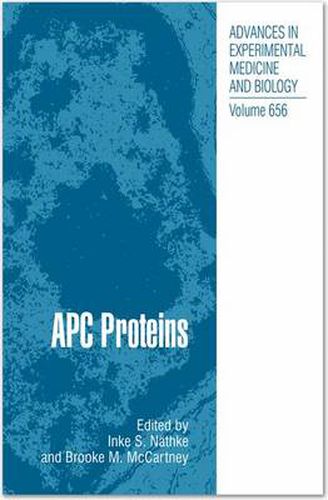Readings Newsletter
Become a Readings Member to make your shopping experience even easier.
Sign in or sign up for free!
You’re not far away from qualifying for FREE standard shipping within Australia
You’ve qualified for FREE standard shipping within Australia
The cart is loading…






The initial identification of the Adenomatous polyposis eoli (Ape) gene as the site of mutations in familial adenomatous polyposis (FAP) was described in 1 1992. ,2 A causal relationship between Ape mutations and intestinal tract tumours was confirmed three years later with the establishment ofthe Min mouse model) These mice are heterozygous forApe and develop numerous intestinal tumours that mimic FAP. Subsequently, Ape has emerged as the most commonly mutated gene in colorectal cancerwith reports varying between 50-80% ofsporadic tumours car- rying such mutations. The search for how mutations in Ape initiate and/or support progression oftumours in the intestinal tract has revealed that the Ape protein is a multifunctionalparticipant in a diverse array ofcellular functions. By collecting and assembling the chapters inthisbook, we aimed toprovide an overview of the diverse functions performed by the Ape protein. As summarised in a short final chapter by Trainer,heterozygosityofApe leads to a number ofextracolonic manifestations that further support this emerging picture ofthe Ape protein as an active contributor to many different cellular functions. The first recognised function of Ape was its role in Wnt signalling. o This function is one of the driving forces for how mutations in Ape ensure that cells remain proliferative. Many of the molecular details of this pathway have been discovered and are described in the first chapter by Kennell and Cadigan.
$9.00 standard shipping within Australia
FREE standard shipping within Australia for orders over $100.00
Express & International shipping calculated at checkout
The initial identification of the Adenomatous polyposis eoli (Ape) gene as the site of mutations in familial adenomatous polyposis (FAP) was described in 1 1992. ,2 A causal relationship between Ape mutations and intestinal tract tumours was confirmed three years later with the establishment ofthe Min mouse model) These mice are heterozygous forApe and develop numerous intestinal tumours that mimic FAP. Subsequently, Ape has emerged as the most commonly mutated gene in colorectal cancerwith reports varying between 50-80% ofsporadic tumours car- rying such mutations. The search for how mutations in Ape initiate and/or support progression oftumours in the intestinal tract has revealed that the Ape protein is a multifunctionalparticipant in a diverse array ofcellular functions. By collecting and assembling the chapters inthisbook, we aimed toprovide an overview of the diverse functions performed by the Ape protein. As summarised in a short final chapter by Trainer,heterozygosityofApe leads to a number ofextracolonic manifestations that further support this emerging picture ofthe Ape protein as an active contributor to many different cellular functions. The first recognised function of Ape was its role in Wnt signalling. o This function is one of the driving forces for how mutations in Ape ensure that cells remain proliferative. Many of the molecular details of this pathway have been discovered and are described in the first chapter by Kennell and Cadigan.